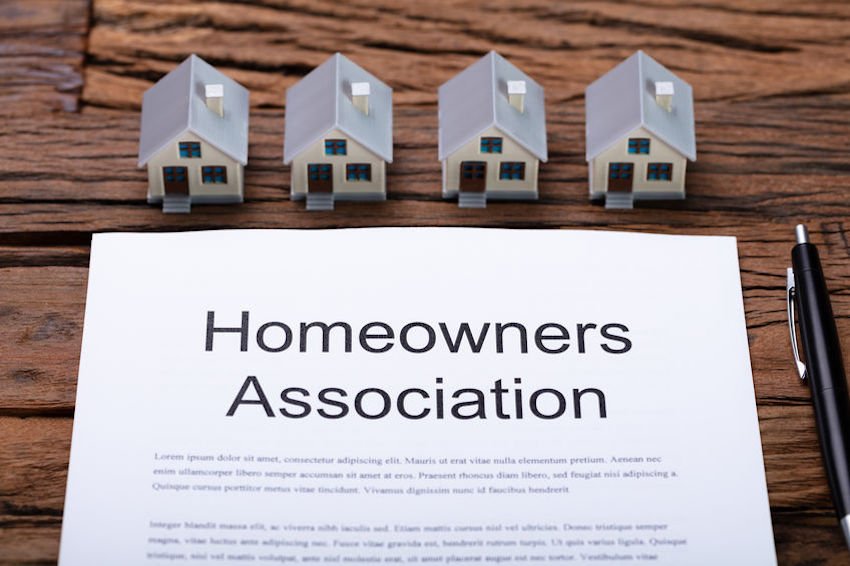How Condominium HOA Governs Shared Areas and Improves Community Harmony
The governance of common areas within a condo organization plays an essential role in promoting neighborhood cohesion and maintaining home worths. With the facility of detailed standards, the Condominium HOA not only manages the usage of common facilities yet also promotes a culture of regard and responsibility among locals.
Role of the HOA
The home owners association (HOA) acts as the regulating body for condo areas, playing a crucial duty in preserving the property and advertising a cohesive living atmosphere. It is responsible for enacting and applying neighborhood regulations and laws, which are created to protect the visual worth and capability of the shared space. This governance guarantees that all homeowners comply with a standardized set of assumptions, cultivating a sense of unity among diverse property owners.
In Addition, the HOA takes care of the economic facets of the area, including budgeting, gathering fees, and preserving usual locations. This financial oversight is essential in ensuring that essential upkeep and renovations are accomplished immediately, improving building values in time. The HOA also serves as a liaison in between residents and exterior entities, such as city government and company, addressing common worries effectively.
In Addition, the HOA often organizes area occasions and programs, motivating neighborly communications and constructing connections amongst locals. By helping with open communication and attending to complaints, the HOA contributes to a harmonious living environment. Thus, its multifaceted duty is vital in making sure the smooth operation and general satisfaction within condominium areas.
Guidelines for Shared Spaces
Reliable governance in condominium areas demands clear policies for common rooms, which are vital for maintaining order and promoting a feeling of area amongst homeowners. These rules work as guidelines that guarantee every person can delight in typical areas, such as pools, gardens, and leisure centers, without problem.

Moreover, tidiness and upkeep criteria are essential, commonly specifying that locals must clean up after themselves and report any type of damages to the house owners' association. By clearly connecting these assumptions, the HOA can urge and lessen misunderstandings respect amongst citizens.
Ultimately, well-defined policies for shared rooms add to the general lifestyle in a condo community, permitting homeowners to coexist in harmony while enjoying the features that enhance their living experience. condo hoa.
Value of Community Standards
Area standards play a substantial role in fostering a cohesive and respectful atmosphere within condo associations. These guidelines develop clear expectations for homeowners, advertising a feeling of responsibility and shared obligation. By marking appropriate actions and techniques, community guidelines help avoid misconceptions and problems among residents.
Moreover, these guidelines function as link a structure for preserving the useful and aesthetic honesty of common areas. They make sure that all citizens comply with criteria pertaining to residential property visit upkeep, sound degrees, and use of common facilities. This harmony not only boosts the visual allure of the area but also adds to general property worths, benefiting all house owners.

Problem Resolution Methods
Browsing conflicts within a condominium organization needs an organized strategy to guarantee fair and reliable resolution. Reliable problem resolution strategies commonly start with open interaction, motivating locals to voice worries in a respectful manner. Developing a marked network for complaints, such as an idea box or an on the internet forum, can promote this process.
Mediation is one more crucial technique, wherein a neutral third party helps challenging citizens get to a mutually acceptable service. This technique fosters collaboration and understanding, reducing hostility - condo hoa. The HOA board need to additionally develop clear procedures for dealing with issues, ensuring all parties understand the steps involved
Routine problem resolution training for board participants can enhance their capability to take care of conflicts effectively. Utilizing a distinct framework, such as the "Interest-Based Relational Technique," helps focus conversations on interests rather than positions, promoting a solutions-oriented frame of mind.
Benefits of Community Consistency
Promoting neighborhood harmony within a condo organization brings many advantages that boost the general living experience for locals. A harmonious neighborhood encourages partnership and teamwork amongst next-door neighbors, causing a more harmonious environment. When residents feel connected and reputable, they are more probable to involve in public tasks and take part in decision-making procedures, leading to a stronger feeling of belonging.
Additionally, community consistency considerably minimizes misconceptions and disputes, which can otherwise interrupt day-to-day live. A serene environment lessens tension and advertises psychological well-being, permitting locals my explanation to enjoy their homes fully. Additionally, unified connections often equate right into enhanced building values, as prospective customers are attracted to neighborhoods identified by security and cooperation.

Conclusion
In summary, the role of the Condo HOA is pivotal in regulating shared rooms and fostering neighborhood harmony. condo hoa. Through the facility of clear rules and area guidelines, locals are encouraged to maintain a responsible and considerate atmosphere. Efficient problem resolution methods better enhance communication and collaboration among locals. Inevitably, the efforts of the HOA add to a cohesive neighborhood, advertising both home values and overall resident satisfaction. The positive effect of these initiatives is crucial for continual common health.
Furthermore, the HOA commonly organizes community events and programs, urging neighborly interactions and building relationships amongst homeowners. By defining acceptable habits and techniques, community guidelines aid protect against misunderstandings and conflicts among locals.
Furthermore, area standards promote reliable interaction among locals and the Homeowners Organization (HOA) With the facility of clear guidelines and area standards, locals are urged to keep a respectful and responsible setting. Eventually, the initiatives of the HOA add to a cohesive neighborhood, advertising both home worths and general resident complete satisfaction.